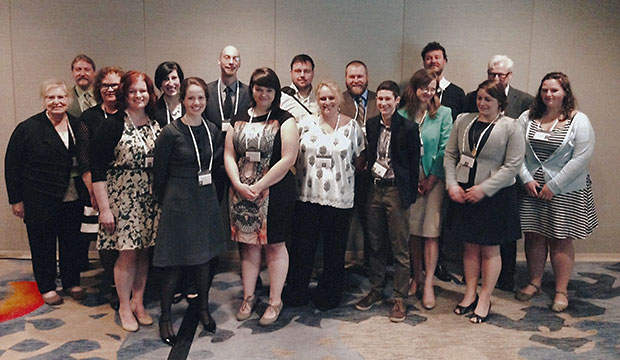Symposium Title: People that No One Had Use For, Had Nothing to Give to, No Place to Offer: The Milwaukee County Institution Grounds Poor Farm Cemetery
 Abstract: Based on Wisconsin’s Territorial Act of 1838 and state statutes enacted in 1849 provision for the welfare of the poor became the legal responsibility of local governing including the Milwaukee County Board of Supervisors. The various formal institutions of Milwaukee County were established to provide care for the indigent, sick, orphaned and homeless as well as the burial of individuals from those categories. From 1878 through 1974 Milwaukee County utilized four locations on the Milwaukee County Grounds for burial of more than 7,000 individuals. Two archaeological excavations in 1991 and 1992 and in 2013 resulted in the recovery of over 2,800 individuals from one of those cemetery locations. This symposium presents historical, archaeological and osteological research related to those excavations. Specific paper topics include analyses of historical documents and material culture assemblages, spatial patterning within the cemetery limits, the relationship between Milwaukee County and local medical schools, molecular identification of Mycobacterium tuberculosis in human skeletal remains, evidence for autopsy or medical school use of individual corpses, a refined method of juvenile age assessment, the application of strontium analysis for the establishment of identity, and the application of portable X-ray fluorescence technology to the excavation and analysis of human remains.
Abstract: Based on Wisconsin’s Territorial Act of 1838 and state statutes enacted in 1849 provision for the welfare of the poor became the legal responsibility of local governing including the Milwaukee County Board of Supervisors. The various formal institutions of Milwaukee County were established to provide care for the indigent, sick, orphaned and homeless as well as the burial of individuals from those categories. From 1878 through 1974 Milwaukee County utilized four locations on the Milwaukee County Grounds for burial of more than 7,000 individuals. Two archaeological excavations in 1991 and 1992 and in 2013 resulted in the recovery of over 2,800 individuals from one of those cemetery locations. This symposium presents historical, archaeological and osteological research related to those excavations. Specific paper topics include analyses of historical documents and material culture assemblages, spatial patterning within the cemetery limits, the relationship between Milwaukee County and local medical schools, molecular identification of Mycobacterium tuberculosis in human skeletal remains, evidence for autopsy or medical school use of individual corpses, a refined method of juvenile age assessment, the application of strontium analysis for the establishment of identity, and the application of portable X-ray fluorescence technology to the excavation and analysis of human remains.
Authors and Presentation
Patricia Richards, “Here lies…. You know, Weaver, I’ve forgotten who we just buried: The Milwaukee County Poor Farm Cemetery Project”
Brooke Drew, “Who, What, Where, When and How: A Comprehensive Archival Investigation of the Milwaukee County Institution Grounds Cemeteries, 1882-1925”
Nicholas Richards, “MCIG according to MCIG: Historic Document Research”
Alex Anthony, “The 1912 Institutional Grave Desecration of the Milwaukee County Potter’s Field”
Eric Burant, “What’s in a Grave: A Preliminary Analysis of Material Culture from the Milwaukee County Institution Grounds Cemetery”
Catherine Jones, “The Sum of Their Parts: Retrieving Individuality From Atypical Mixed Burials at the MCIG Poor Farm Cemetery”
Alexis Jordan, Catherine Jones, and Shannon Freire, “The Sum of Their Parts: Retrieving Individuality From Atypical Mixed Burials at the MCIG Poor Farm Cemetery”
Adrienne Frie and Patricia Richards, “Historical Craniotomy and Autopsy Practices at the Milwaukee County Institutional Grounds Poor Farm Cemetery”
David Strange, “Evidence for antemortem or perimortem trauma among individuals recovered from the 2013 Milwaukee County Institution Poor Farm Cemetery excavations”
Helen Werner, “Molecular Identification of Mycobacterium tuberculosis in the Milwaukee County Institution Grounds Cemetery”
Jessica Skinner, “Entheses and Activities: A Metric and Nonmetric analysis of Entheseal Change of the Shoulder Complex within the Milwaukee County Institution Grounds Population”
Brianne Charles and Emily Epstein, “Expanding Juvenile dental age assessments using 2013 recovered MCIG subadult dental data
Emily Epstein, Brianne Charles, and Brooke Drew, “Investigating neonatal line revealed in broken teeth as means of determining stillborn versus live births among MCIG juveniles”
Shannon Freire and Alexis Jordan, “The Application of Strontium Isotopes to Historic Cemetery Contexts: A Case Study for the Creation of Robust Individual Identifications”
John Richards and Catherine Jones, “Using PXRF Technology to Aid in the Recovery and Analysis of Human Remains”
Draft copies of the presentations are available on the Symposium website.